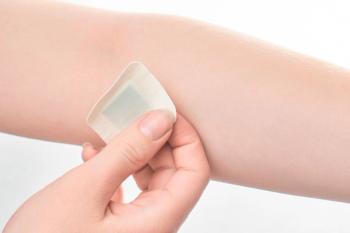
Dropping the X-Waiver for Buprenorphine
The Department of Health and Human Services moves to reduce administrative procedural barriers to OUD treatment.
In an attempt to remove a potential barrier to opioid use disorder (OUD) treatment, the Department of Health and Human Services (HHS) announced a plan1 to drop the X-waiver requirement for
Organizations like the American Medical Association (AMA) welcomed the revision. Patrice Harris, MD, chair of the AMA’s Opioid Task Force and the organization’s immediate past president, said the following in the AMA’s released statement: “With this change, office-based physicians and physician-led teams working with patients to manage their other medical conditions can also treat them for their opioid use disorder without being subjected to a separate and burdensome regulatory regime.”2
The newly unveiled practice guidelines include an exemption from current certification requirements. The exemption applies to physicians already registered with the Drug Enforcement Administration.
The new HHS policy potentially limits physicians to treating no more than 30 patients with buprenorphine for OUD at any single time. The HSS will make exceptions to this limit for hospital-based physicians, such as those working in emergency departments.
Additionally, the policy change only applies to the prescription of drugs or formulations covered under the X-waiver of the Controlled Substance Act, such as buprenorphine. It does not apply to methadone. The effectual date of the new guidelines will be added after publication in the Federal Register.
The X-waiver has received criticism for years, with one group of doctors writing a 2018 Viewpoint article in JAMA Psychiatry, titled “Buprenorphine Deregulation and Mainstreaming Treatment for Opioid Use Disorder: X the X Waiver.”3 Deregulating buprenorphine, in the opinion of the authors, might be a way to mainstream an effective treatment for OUD.
“Federal policies surrounding buprenorphine constrain its wider use through separate US Drug Enforcement Agency (DEA)–amended licenses (‘waivers’) after approved training,” wrote Fiscella et al. “Removing buprenorphine prescribing regulations in France yielded increases in its use by persons with OUD. Notably, deaths from opioid overdoses in France declined 79% over the subsequent 3 years.”3
By removing this waiver, the HHS has hopefully taken a step toward reducing opioid overdose in the United States.
References
1. Department of Health and Human Services. Announcement of practice guidelines for the administration of buprenorphine for treating opioid use disorder. January 12, 2021. Accessed January 18, 2021.
2. Young KD. HHS will drop buprenorphine waiver rule for most physicians. Medscape. January 15, 2021.
3. Fiscella K, Wakeman SE, Beletsky L. Buprenorphine deregulation and mainstreaming treatment for opioid use disorder: X the x waiver. JAMA Psychiatry. 2019;76(3):229-230.
Newsletter
Receive trusted psychiatric news, expert analysis, and clinical insights — subscribe today to support your practice and your patients.













